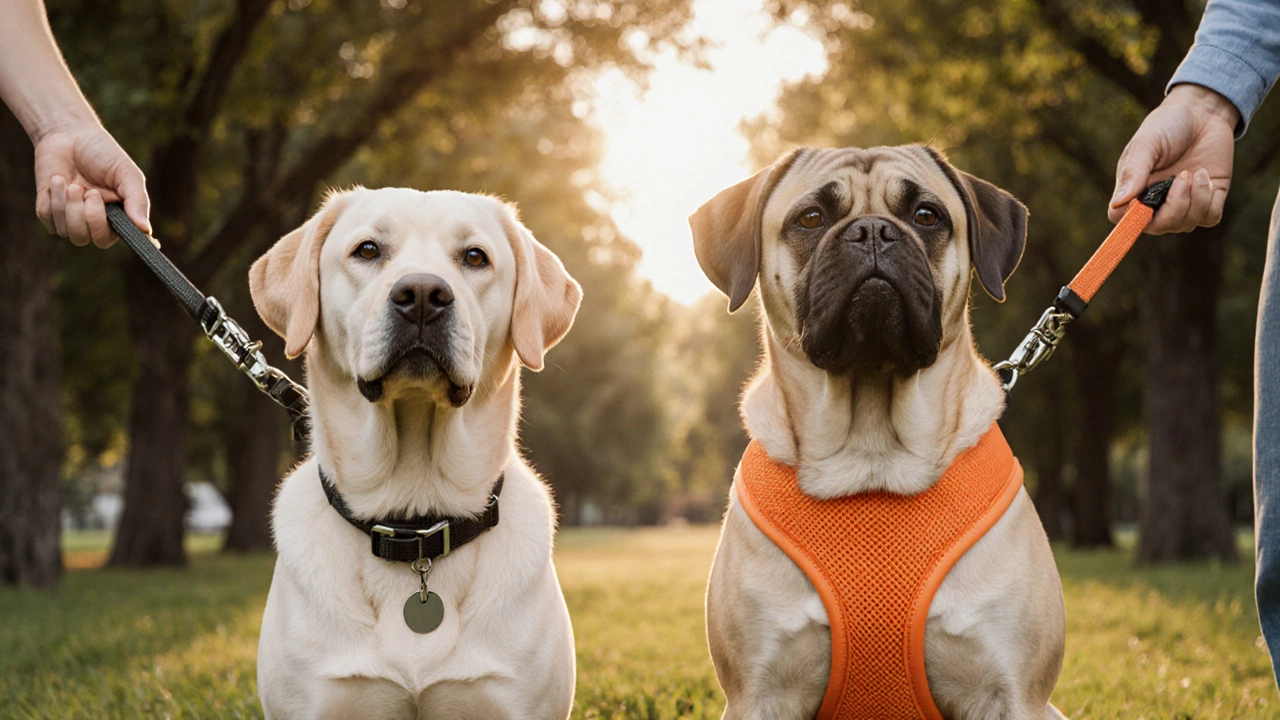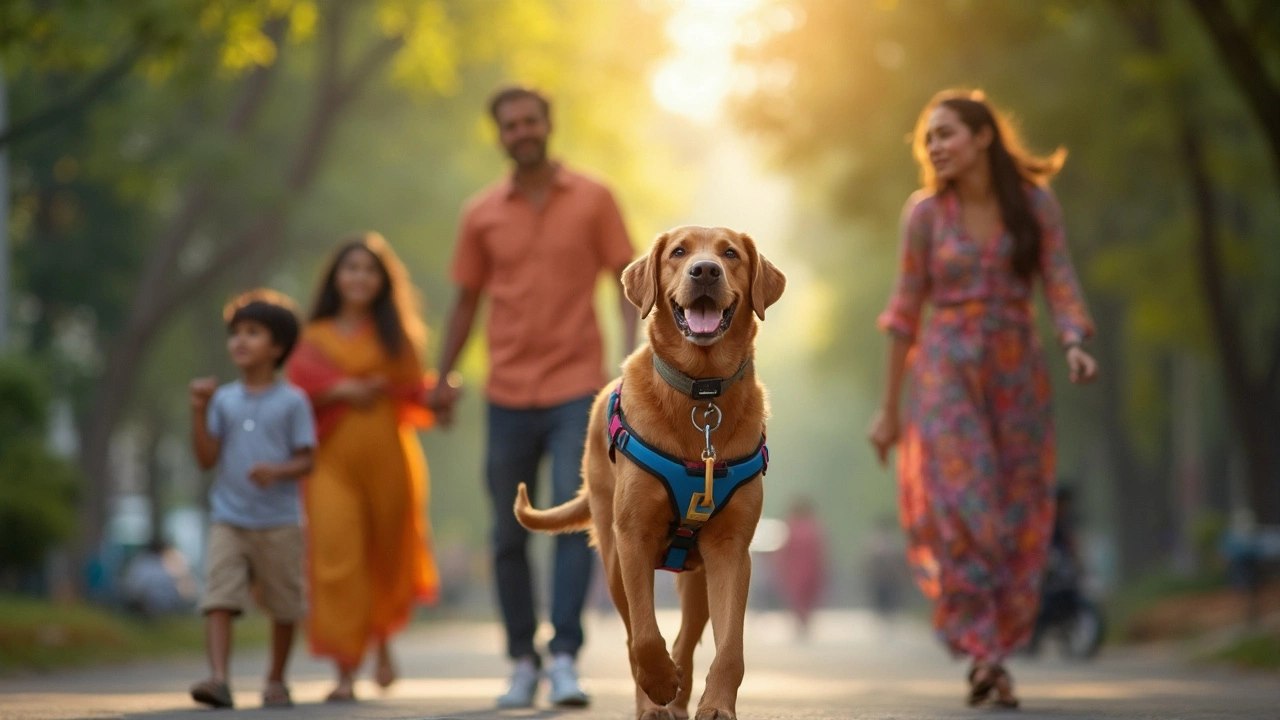Choosing the Right Dog Collar: A Simple Guide for Every Owner
First thing when you get a new pup is a collar. It’s not just a fashion statement; it’s the link between you and your dog when you’re out walking.
What Types of Dog Collars Exist?
Flat nylon collars are the most common. They’re cheap, lightweight, and come in any color you like. If your dog pulls a lot, a martingale collar gives you more control without choking.
For training, many owners try a slip‑lead or a gentle “no‑pull” harness. Those aren’t really collars, but they do the same job of keeping you connected.
Specialty collars include reflective ones for night walks, breakaway collars for dogs that love to play rough, and LED collars that glow.
How to Pick the Right Size
Measure your dog’s neck with a soft tape. Add two fingers’ width between the collar and the neck – that’s the sweet spot. Too tight means choking, too loose and the tag can slip off.
Most brands list a size chart. If your dog is between sizes, go up. A snug fit now can become tight as your dog gains weight.
Check the buckle regularly. Plastic clips can break on a tug, while metal buckles last longer but can be heavier.
Don’t forget the tag. A simple ID tag with your phone number can be a lifesaver if your dog runs off.
When you first put the collar on, watch your dog’s reaction. If they seem uncomfortable, try a softer material or adjust the fit.
Collars also need cleaning. Wash a nylon collar in the washing machine, rinse a leather one with a damp cloth, and dry completely before re‑using.
Replace any collar with frayed edges or a broken buckle. A worn‑out collar can snap during a sudden pull.
Some owners use a double‑layer collar – a lightweight everyday collar underneath a tougher backup collar. That way the everyday one stays clean while the backup catches any strong pulls.
For dogs that love water, make sure the collar is quick‑dry. A soaked leather collar can become stiff and uncomfortable.
When traveling, a lightweight collapsible collar is handy. It folds flat and fits in a bag, yet still holds a tag.
Training collars like citronella or vibration collars are controversial. Most trainers recommend positive reinforcement instead, and many vets warn against any device that could cause pain.
If you’re unsure, ask your vet or a professional trainer. They can suggest a collar that matches your dog’s breed, size, and behavior.
Finally, enjoy the walks. A good collar makes leash time safer and more fun for both you and your dog.

Dog Collar vs Harness: Which Is Safer for Walking?
Find out whether a dog collar or a harness is safer for walks, how anatomy, behavior, and breed affect the choice, and get a practical checklist.
read more
Can a Dog Wear a Collar and a Harness at the Same Time?
Ever wondered if you can keep a collar and harness on your dog at the same time? This article cuts through myths and confusion, spelling out when and how to use both safely. Get tips on comfort, safety, and training, plus advice for choosing the right gear. You'll learn what works for walks, IDs, and daily life. Perfect for anyone who wants to keep their dog safe and comfy.
read more



